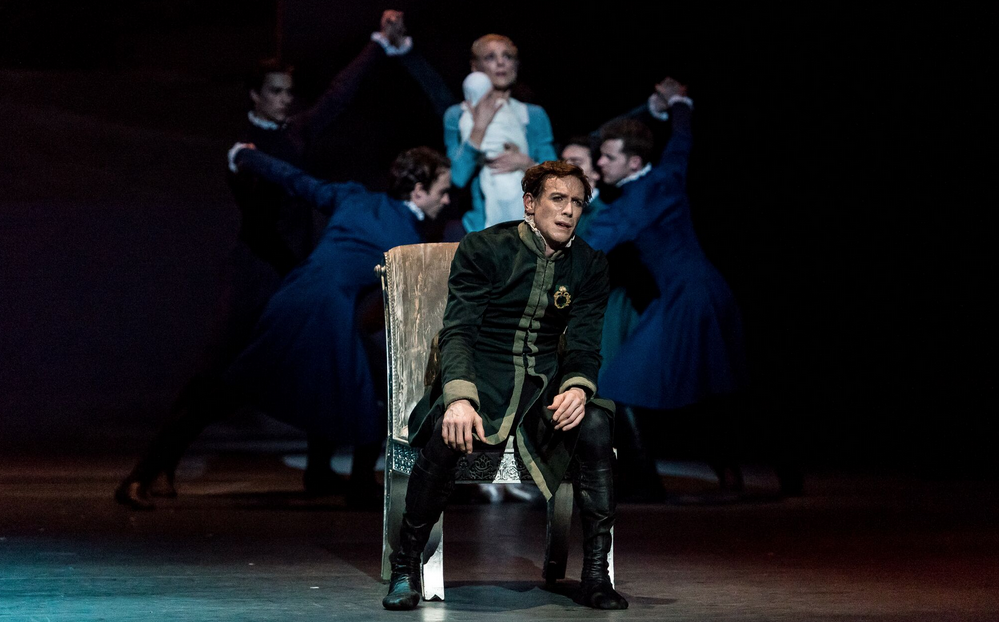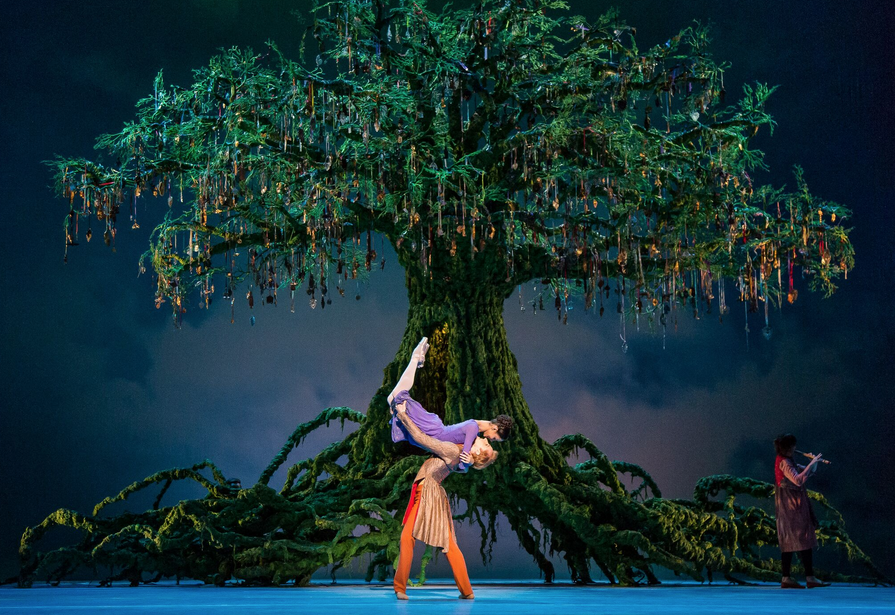The Winter’s Tale – a tragicomedy written late in Shakespeare’s career – has only ever been intermittently popular with theatre companies, never enjoying the same fame as his Macbeths and Hamlets. This makes the decision to turn the play into a full-length ballet an interesting one, especially in the absence of the Bard’s illuminating text. But a closer inspection of the storyline – marked by jealousy, remorse, passion and ruin on the grandest scale – reveals exactly what inspired choreographer Christopher Wheeldon to make his 2014 interpretation of the play on the Royal Ballet. To emphasise these thematic elements and overcome the challenges of ‘dancing’ Shakespeare, Wheeldon has removed some of the secondary characters and their plotlines. But their absence only serves to sharpen the narrative and ultimately intensify the drama. What results is a remarkably theatrical story ballet, superbly danced by one of the finest companies in the world.
The anchor point of the story is Leontes, King of Sicilia, who, suspicious of his pregnant wife’s interactions with his old friend Polixenes, King of Bohemia, is overcome with jealously. Leontes rages and descends into madness, taking down all those close to him. It’s a demanding role and principal Edward Watson dances it with incredible skill. His extensions and jumps are a joy to watch, but more impressive is his completely believable portrayal of the King’s psychological self-destruction. Indeed, much of the gravitas of the first act is carried by Watson and the pathos he wrests from his character. The performances of principal Lauren Cuthbertson, as his wife Hermione, and principal Zenaida Yanowsky, as the Queen’s head of household Paulina, are beautifully danced and offer a measured contrast to the King’s unruly demise.
 Edward Watson in A Winter’s Tale. Photos © Darren Thomas
Edward Watson in A Winter’s Tale. Photos © Darren Thomas
Accompanying the narrative is Joby Talbot’s stunning commissioned score, played in Brisbane by the Queensland Symphony Orchestra under the hand of Alondra de la Parra. For the most part, the movement and music marry perfectly – a direct result of Wheeldon’s and Talbot’s close collaboration during the creative process. Subtle shifts in tone and energy on stage are matched in the orchestra pit so closely that, if you were to shut your eyes, you could almost read the entire story from the music alone. An early scene in which Leontes stalks his wife and Polixenes in a garden of statues is a particularly clever example of Talbot’s music (together with Natasha Katz’s lighting) switching between external reality and inside Leontes’ mind – each of these shifts mirroring Shakespeare’s famous ‘asides’. While the score tends to drive the narrative with its seamless transitions to the next scene without pause, it’s careful not to overpower the dancing. The symbiotic relationship between the music and choreography is arguably what makes the ballet so successful.
The second act stands in stark contrast to tragedy that plagues the first. We are now 16 years in the future in the Kingdom of Bohemia where the villagers are celebrating the springtime festival. Taking centre stage (and the breath away from half the audience on opening night) is set designer Bob Crowley’s Bohemia: an enormous magical tree with floating roots adorned with gold, set against a backdrop of blue sky. To match the otherworldliness of the visual, Wheeldon and Talbot have created their own kind of folk music and movement vocabulary (part Celtic, part Slavic, part South Asian), which is at once familiar and alien. This special folk dance is performed by the corps de ballet, who impress with their unison execution of virtuosic jumps, turns and lifts. Weaving in and out of this folkish celebration is the story of the two young lovers: Prince Florizel (played by Australian-born principal Steven McRae) and Leontes’ abandoned daughter Perdita (danced by principal Francesca Hayward). Both are marvellous. McRae’s boyish charm and effortless elevation are paired perfectly with Hayward’s control and luscious extensions. This couple certainly steal the second act and perhaps the whole show.
 Steven McRae and Francesca Hayward in A Winter’s Tale. Photos © Darren Thomas
Steven McRae and Francesca Hayward in A Winter’s Tale. Photos © Darren Thomas
The third act is much shorter and much less busy. This is where Shakespeare’s story climaxes and resolves all the problems caused by Leontes’ demise. Talbot’s music follows this trajectory – offering several moments of sweeping intensity and crescendo. But, in deviating from what has come before, Wheeldon’s choreography pulls away, letting the drama reside in the music rather than the bodies on stage. While it’s not anticlimactic, the third act feels a little more like an epilogue than a finale; not quite delivering the emotional intensity that has been felt before this point. But arguably this is Wheeldon’s method for overcoming the discordance between the tragic first three acts of Shakespeare’s play and the comedic last two acts. In an attempt to find dramaturgical cohesion in the work, it seems that Wheeldon has choreographed a much more poignant ending than what the original text suggests.
The Winter’s Tale is a true story ballet. By focusing on the key narrative arcs from the original script and accentuating universal themes of jealousy, remorse and love, Wheeldon (and Talbot) have created a visually and aurally compelling work. Daniel Brodie and Basil Twist, whose clever video projections onto silk help progress the narrative at key points, make it a collaborative effort. And at the heart of this work are the dancers of the Royal Ballet, whose technical and theatrical proficiency enable us to see what remarkable stories dance can tell.












Comments
Log in to join the conversation.